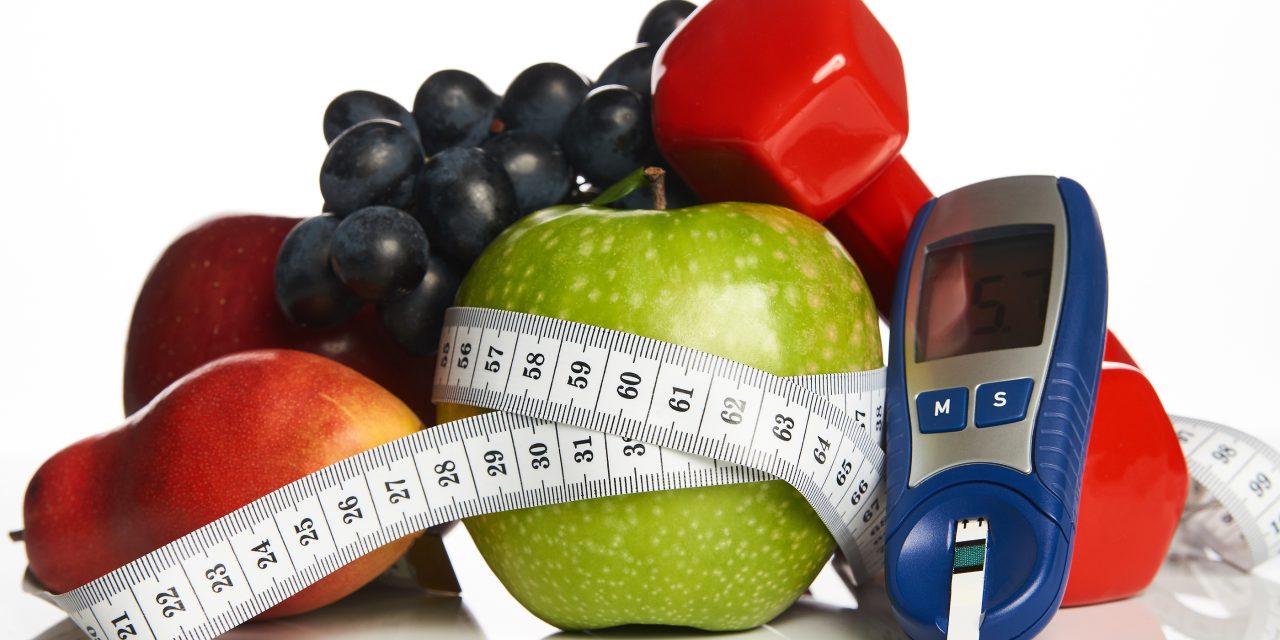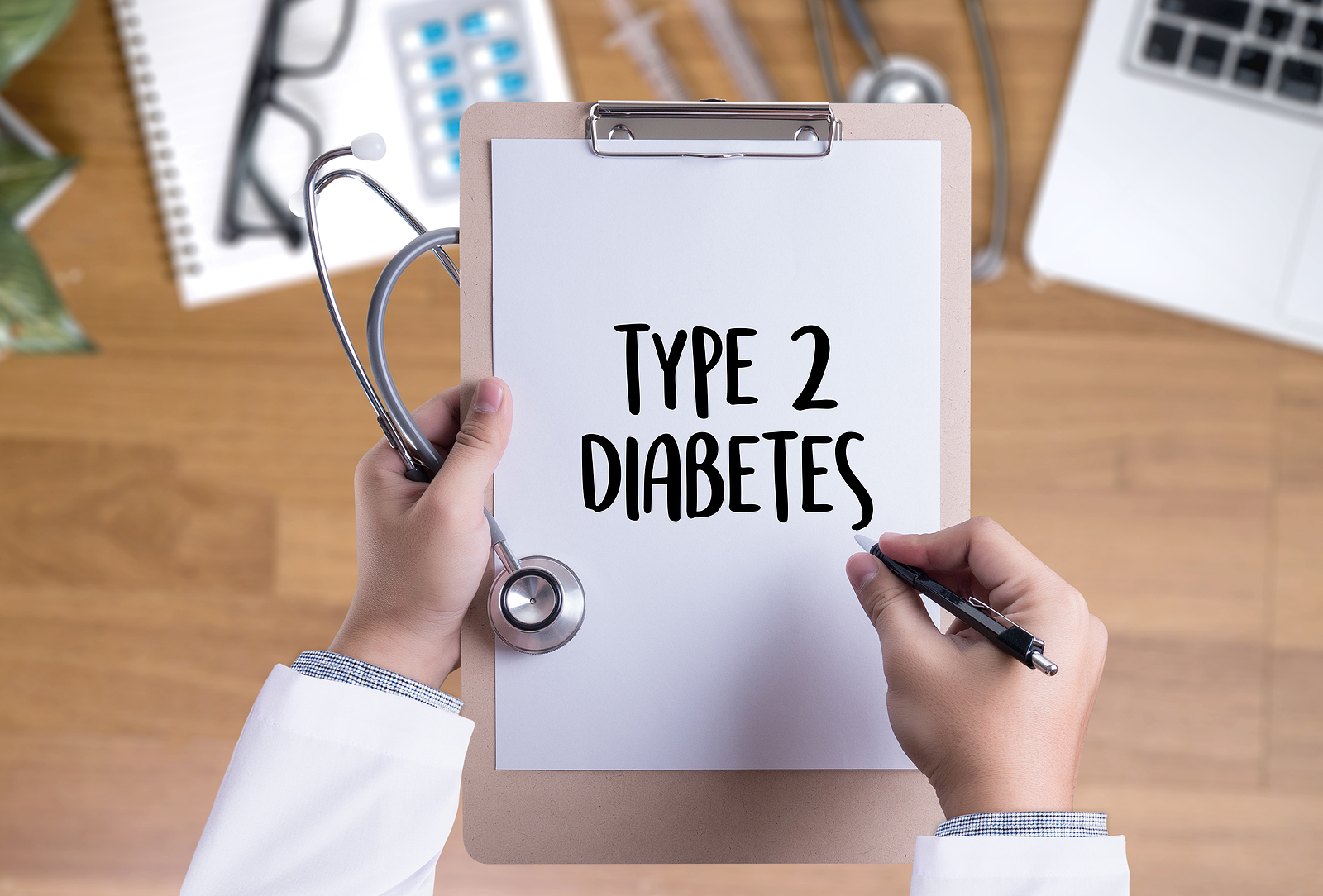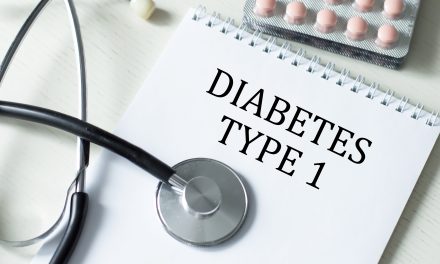Type 2 diabetes, a common yet chronic health condition, affects millions of people worldwide. Diabetes mellitus is characterized by high blood sugar levels due to the body’s resistance to insulin or lack of insulin production. Fortunately, with proper management, it is possible to lead an active and healthy life while controlling the disease.
In order to successfully manage type 2 diabetes, individuals need to adopt a holistic approach that incorporates a range of strategies. These strategies include making appropriate lifestyle changes, adhering to medication regimens, and monitoring blood sugar levels regularly. Additionally, type 2 diabetics must remain vigilant about managing any coexisting conditions, seeking education, and staying up-to-date about their illness.
Key Takeaways
- Adopting a holistic approach is crucial for managing type 2 diabetes.
- Balancing lifestyle changes, medication adherence, and blood sugar monitoring helps control the disease.
- Individuals should manage coexisting conditions and maintain their education about the disease.
Understanding Type 2 Diabetes
Type 2 diabetes is a chronic condition that affects the way the body processes glucose, an essential source of energy. In individuals with type 2 diabetes, their body either resists the effects of insulin, a hormone responsible for regulating the entry of sugar into cells, or doesn’t produce enough insulin to maintain healthy glucose levels.
There are several factors contributing to the development of type 2 diabetes, including:
- Genetics: A family history of diabetes may increase the risk.
- Weight: Being overweight or obese is a significant risk factor.
- Age: The risk of developing type 2 diabetes increases with age, particularly after 45.
- Lifestyle: A sedentary lifestyle and poor diet can contribute to insulin resistance.
In order to control and manage type 2 diabetes, it’s crucial to understand the ABCs of diabetes:
- A for A1C test: This measures the average blood glucose levels over the past 2-3 months. The goal for most people with diabetes is to keep their A1C levels below 7%.
- B for Blood pressure: High blood pressure can cause complications for individuals with diabetes. The usual target is below 140/90 mmHg.
- C for Cholesterol: High cholesterol levels can lead to heart disease. Managing cholesterol is essential for overall health.
Effective management of type 2 diabetes includes:
- Monitoring blood glucose: Regularly check blood sugar levels to ensure they are within the target range.
- Healthy diet: Consume a balanced diet, focusing on whole grains, lean proteins, fruits, and vegetables, while minimizing simple sugars and unhealthy fats.
- Physical activity: Engage in regular moderate exercise, such as brisk walking or swimming, for at least 150 minutes per week.
- Medication: If prescribed, consistently take medication as directed by a healthcare professional.
Understanding the causes, risks, and management strategies for type 2 diabetes is essential to successfully control the condition and prevent complications. By maintaining a healthy lifestyle, regularly monitoring blood glucose levels, and following prescribed treatments, individuals with type 2 diabetes can lead a healthier and fulfilling life.
Dietary Management
Carbohydrate Counting
Carbohydrate counting is an essential technique for managing type 2 diabetes. It involves keeping track of the number of carbohydrates consumed in each meal and snack throughout the day. This approach helps maintain stable blood sugar levels and provides flexibility in food choices. Some guidelines for carbohydrate counting include:
- Estimate carbohydrate content: Check food labels and use measuring tools (e.g., cups or scales) to determine the carbohydrate content of each meal component.
- Set carbohydrate goals: Discuss with a healthcare professional or dietitian to establish personalized daily carbohydrate goals.
- Track intake: Use a food diary or mobile app to monitor carbohydrate consumption throughout the day.
Glycemic Index
The Glycemic Index (GI) is a valuable tool for people with type 2 diabetes. It measures how quickly a food containing carbohydrates raises blood sugar levels. Foods with a low GI value (55 or less) are digested and absorbed more slowly, causing a slower and smaller rise in blood sugar levels. Some tips for incorporating low GI foods into the diet include:
- Choose low GI foods: Opt for whole grains, legumes, fruits, and vegetables with a low GI.
- Combine high and low GI foods: To minimize blood sugar fluctuations, include both high and low GI foods in meals.
- Cook appropriately: Cooking methods (e.g., boiling, baking, steaming) can affect the GI of some foods, so experiment with different techniques to maintain a low GI diet.
Meal Planning
Meal planning is crucial in controlling blood sugar levels and managing type 2 diabetes. A well-balanced meal plan can help achieve and maintain a healthy body weight while preventing complications associated with diabetes. Some strategies for effective meal planning include:
- Follow the plate method: Fill half of the plate with non-starchy vegetables, one quarter with whole grains or starchy foods, and the remaining quarter with lean protein. Add a serving of fruit and dairy.
- Schedule regular meals: Eating consistent meals and snacks throughout the day can help maintain stable blood sugar levels.
- Control portion sizes: Use measuring tools and consult food labels to ensure appropriate serving sizes of each food group.
- Incorporate variety: Include a diverse range of foods to ensure adequate intake of essential nutrients.
- Plan in advance: Prepare weekly meal plans and grocery lists to avoid impulsive food choices that may be detrimental to blood sugar control.
Exercise and Physical Activity
Regular physical activity is essential for controlling type 2 diabetes. It helps regulate blood sugar levels, promotes weight loss, and improves overall health. In this section, we will discuss three types of exercises that should be included in a diabetic person’s workout routine: cardiovascular exercises, strength training, and flexibility workouts.
Cardiovascular Exercises
Cardiovascular exercises, also known as aerobic exercises, involve large muscle groups and increase heart rate. Some examples of these exercises are:
- Brisk walking
- Cycling
- Swimming
- Dancing
- Jogging
Aim for at least 30 minutes of moderate to vigorous aerobic exercise, five days a week. You can split this into shorter sessions if necessary, such as 10 or 15-minute intervals. Remember to consult your healthcare professional before starting a new exercise program.
Strength Training
Strength training helps to build and maintain muscle mass, which in turn aids in glucose utilization and blood sugar control. It is recommended to engage in strength training at least two to three times a week, with a focus on major muscle groups. Some options for strength training exercises are:
- Bodyweight exercises (push-ups, squats, lunges)
- Free weights (dumbbells, barbells)
- Resistance bands
- Weight machines
Start with lighter weights and gradually progress to heavier loads as you become stronger. Maintain proper form to prevent injury and achieve better results.
| Muscle Group | Examples of Exercises |
|---|---|
| Legs | Squats, lunges |
| Arms | Bicep curls, tricep dips |
| Chest | Bench press, push-ups |
| Back | Rows, lat pull-downs |
Flexibility Workouts
Flexibility exercises improve the range of motion of your joints, maintain good posture, and reduce the risk of injuries. Incorporate stretching exercises into your routine, either as a separate session or as part of your warm-up and cool-down. Yoga and Pilates are examples of activities that promote flexibility. Aim to perform flexibility workouts at least two to three times per week.
Here are some basic stretches to include in your routine:
- Hamstring stretch
- Quadriceps stretch
- Calf stretch
- Chest stretch
- Shoulder stretch
Hold each stretch for 15-30 seconds, and repeat two to three times. Remember to breathe deeply and relax while stretching to maximize its benefits.
By including a mix of cardiovascular exercises, strength training, and flexibility workouts in your routine, you can effectively manage type 2 diabetes while promoting overall health and wellness.
Medication Adherence
Proper management of type 2 diabetes involves adhering to medications. Two primary categories of medication adherence are essential for controlling diabetes effectively: Oral Medications and Insulin Therapy.
Oral Medications
Oral medications are often the first line of treatment for people with type 2 diabetes. They work in various ways to help control blood sugar levels. Adhering to prescribed medications is crucial for achieving optimal results. Some common oral medications include:
- Metformin: Improves insulin sensitivity and decreases glucose production in the liver.
- Sulfonylureas: Stimulate pancreas to release more insulin.
- DPP-4 inhibitors: Help lower blood sugar levels by inhibiting the DPP-4 enzyme.
| Medication Type | Function |
|---|---|
| Metformin | Improves insulin sensitivity and reduces glucose production |
| Sulfonylureas | Stimulates the pancreas to produce more insulin |
| DPP-4 inhibitors | Lowers blood sugar levels by inhibiting the DPP-4 enzyme |
To increase adherence to oral medications, consider the following tips:
- Develop a routine for taking medications at the same time daily.
- Use a pill organizer to keep track of medications.
- Keep a medication log to record intake and monitor progress.
- Discuss any side effects or concerns with healthcare providers to adjust medications accordingly.
Insulin Therapy
For those with type 2 diabetes, insulin therapy may become necessary if blood sugar levels are not adequately controlled with oral medications. Insulin injections help regulate blood sugar levels by replacing the insulin that the body cannot produce. Adherence to insulin therapy is paramount for managing diabetes. Types of insulin therapy include:
- Rapid-acting insulin: Starts to work within 15 minutes and lasts for 3-4 hours.
- Short-acting insulin: Takes effect within 30 minutes and lasts 6-8 hours.
- Intermediate-acting insulin: Begins working in 1-3 hours and lasts 12-16 hours.
- Long-acting insulin: Starts working after several hours and lasts up to 24 hours.
To optimize adherence to insulin therapy, consider these suggestions:
- Choose an appropriate insulin delivery method (pen or syringe) based on personal preferences and healthcare provider recommendations.
- Set a consistent injection schedule to maintain proper insulin levels.
- Always rotate injection sites to prevent lipohypertrophy.
- Monitor blood sugar levels regularly and adjust insulin doses as needed, under the guidance of a healthcare provider.
Remember, medication adherence is a key component of type 2 diabetes management. By following these strategies and communicating with healthcare providers, individuals with diabetes can achieve better control, reducing risks and improving their overall health.
Monitoring Blood Glucose
Using Glucometers
A crucial aspect of controlling diabetes type 2 is monitoring blood glucose levels using a glucometer. To use a glucometer, follow these steps:
- Wash your hands: Clean hands ensure accurate results.
- Insert a test strip: Place a new test strip into the device.
- Prick your finger: Use a lancing device to draw a small drop of blood.
- Apply blood to the test strip: Gently touch the test strip to the blood sample.
- Read the result: The glucometer will display your blood glucose level after a few seconds.
Keep a log of your readings to track your blood glucose levels over time.
Understanding Your Numbers
Knowing what your blood glucose numbers mean is vital for effectively managing diabetes type 2. Here is a basic guideline of target blood glucose levels:
| Time of Test | Target Range (mg/dL) |
|---|---|
| Before Meals | 80-130 |
| 1-2 Hours After Meals | Less than 180 |
Your healthcare provider may recommend different target ranges based on your individual needs.
- Hypoglycemia: Blood glucose levels below 70 mg/dL may indicate hypoglycemia (low blood sugar) and require immediate attention.
- Hyperglycemia: Blood glucose levels above 180 mg/dL may indicate hyperglycemia (high blood sugar) and signal a need for medication or lifestyle adjustments.
Continuous Glucose Monitors
A Continuous Glucose Monitor (CGM) is an advanced tool that provides real-time glucose readings. It consists of a small sensor inserted under the skin, which measures blood glucose levels continuously throughout the day. The sensor transmits this data to a device that displays your glucose levels in a graph, making it easier to identify trends and patterns.
Advantages of a CGM include:
- Fewer fingersticks: CGMs reduce the need for multiple daily finger pricks.
- Better management: Real-time data helps you make informed decisions about medication, exercise, and diet.
- Alarms: CGMs can alert you when your blood glucose levels are too high or too low, helping you respond quickly.
Consult with your healthcare provider to determine if a CGM is right for you and your diabetes management plan.
Weight Management Strategies
Weight management plays a crucial role in controlling diabetes type 2. By maintaining a healthy weight, individuals can better regulate their blood sugar levels and reduce the risk of complications. Here are some effective strategies for weight management in diabetes type 2:
1. Balanced Diet: Consuming a well-balanced diet is essential for weight management. This should include:
- Carbohydrates: Complex carbs like whole grains, fruits, and vegetables should be prioritized over simple carbs found in sugary foods.
- Protein: Lean proteins such as chicken, fish, and legumes are beneficial for weight management.
- Fats: Focus on healthy fats like avocados, nuts, and olive oil while avoiding saturated and trans fats.
2. Portion Control: Monitoring portion sizes can help prevent overeating and excessive calorie intake. Some tips include:
- Using smaller plates and bowls for meals.
- Dividing the plate into sections, with half being vegetables, a quarter being protein, and the remaining quarter being carbohydrates.
- Avoiding second servings or large restaurant portions.
3. Regular Exercise: Engaging in regular physical activity promotes weight loss and improves blood sugar control. It is recommended to:
- Aim for at least 150 minutes of moderate-intensity physical activity per week, such as brisk walking, swimming, or cycling.
- Incorporate strength training exercises like weightlifting or resistance bands at least twice per week.
4. Monitoring and Accountability: Regularly monitoring weight and blood sugar levels is important for assessing the effectiveness of weight management strategies. Consider:
- Weighing in at least once a week and monitoring trends over time.
- Utilizing apps or tools for tracking daily food intake, physical activity, and blood sugar measurements.
5. Support and Education: Seeking assistance and guidance from professionals and support groups can be valuable in maintaining motivation and staying informed about diabetes management. Remember to:
- Stay up-to-date with the latest research and management techniques for type 2 diabetes.
- Reach out to a registered dietitian, endocrinologist, or certified diabetes educator for personalized advice and support.
By implementing these weight management strategies, individuals with diabetes type 2 can work towards better blood sugar control, ultimately reducing their risk of long-term complications related to the condition.
Stress Reduction Techniques
Mindfulness
Practicing mindfulness can be an effective way to manage stress in people with type 2 diabetes. Some key benefits include:
- Improved mental clarity
- Increased self-awareness
- Enhanced emotional regulation
Here are a few mindfulness techniques to try:
- Deep breathing: Take slow, deep breaths, inhaling through the nose and exhaling through the mouth.
- Body scan: Pay attention to your body, starting from the feet and gradually working your way up to the head, noticing any sensations or tension.
- Mindful eating: Slow down, savor each bite, and focus on the tastes, textures, and smells of your food.
| Technique | Brief Description |
|---|---|
| Deep breathing | Slow, deep breaths to quiet the mind |
| Body scan | Paying attention to each part of the body |
| Mindful eating | Focusing on sensory experiences while eating |
Cognitive Behavioral Strategies
Cognitive behavioral strategies can also help control stress in individuals with type 2 diabetes. These approaches aim to identify unhealthy thought patterns and replace them with healthier alternatives, resulting in reduced stress levels. Techniques include:
- Cognitive restructuring: Identify negative thoughts and beliefs, challenge them, and replace them with healthier thoughts.
- Problem-solving: Identify the cause of stress, brainstorm possible solutions, select the best option, and plan steps to execute the chosen solution.
- Assertiveness training: Develop the skill to communicate your needs and preferences in a respectful and non-aggressive manner.
To reinforce these strategies:
- Keep a journal to track emotions, thoughts, and behaviors.
- Set aside time to practice and reflect on the strategies.
- Seek support from friends, family, or mental health professionals.
Incorporating mindfulness and cognitive behavioral strategies into your daily routine can lead to better stress management and improved diabetes control. Remember to consult your healthcare provider before making any changes to your diabetes management plan.
Regular Health Check-Ups
To effectively control type 2 diabetes, it is essential to have regular health check-ups. This helps monitor the progress and effectiveness of the treatment plan, and assess any complications that may arise. Some vital measurements and checks include:
- Blood sugar levels: Both fasting blood sugar and post-meal blood sugar levels should be tested. Aim to check these at least every three months.
- HbA1c: This test provides an average of the blood sugar levels over the past three months. It should be conducted at least twice a year.
- Blood pressure: Monitoring blood pressure is important as hypertension can be a common issue for those with diabetes. Aim for a check-up every three months.
- Cholesterol: High cholesterol levels can increase the risk of heart diseases. Check these numbers at least once a year.
In addition to the above, consider the following essential tests and examinations:
- Kidney function tests: These tests check for the presence of albumin in the urine and assess kidney filtering efficiency by measuring creatinine levels in the blood.
- Eye examination: An annual retinal exam by an ophthalmologist can help to identify early signs of diabetic retinopathy.
- Foot examination: A regular foot exam by a healthcare professional can identify any foot ulcers or nerve damage caused by diabetes. Self-examine your feet daily to spot any issues.
Maintaining a medical record that encompasses test results, medications, and health conditions is crucial. Regularly sharing this information with a healthcare provider will assist them in making any necessary adjustments to the treatment plan. Additionally, take specific actions like getting annual vaccinations, such as a flu shot, and discussing any potential side effects of medications with your healthcare provider. Always remember: early detection and management of diabetes complications is vital for long-term health.
Managing Coexisting Conditions
People with type 2 diabetes often have other health issues that need to be managed concurrently. Properly addressing these conditions can greatly improve the overall health and well-being of an individual. The most common coexisting conditions are hypertension, high cholesterol, and obesity. In this section, we will briefly discuss ways to manage these conditions effectively.
Hypertension
Regular monitoring of blood pressure is crucial for people with type 2 diabetes, as hypertension can increase the risk of heart-related complications. It is essential to maintain blood pressure at or below 130/80 mm Hg. The following steps can aid in controlling hypertension:
- Eat a balanced diet: Aim for a diet rich in fruits, vegetables, and whole grains. Limit sodium intake and avoid processed foods.
- Exercise regularly: Engage in physical activity for at least 30 minutes per day, most days of the week.
- Take prescribed medications: Follow your healthcare professional’s recommendations for blood pressure medications.
High Cholesterol
Managing cholesterol levels is crucial for individuals with type 2 diabetes. Elevated cholesterol levels can contribute to the development of atherosclerosis, leading to an increased risk of heart disease and stroke. To control cholesterol levels:
- Monitor lipid levels: Get regular lipid profile tests to keep track of your cholesterol levels.
- Consume healthy fats: Opt for unsaturated fats (found in olive oil, nuts, and fish) and limit the intake of saturated fats (found in red meat and dairy products).
- Follow medication guidelines: Adhere to your healthcare professional’s advice regarding cholesterol-lowering medications.
Obesity
Weight management plays a significant role in controlling diabetes. Losing weight helps enhance insulin sensitivity and reduces the risk of other complications. Implementing the following strategies can assist in weight loss:
- Develop a healthy meal plan: Focus on consuming a diet rich in fruits, vegetables, lean proteins, and whole grains. Make sure to watch portion sizes and caloric intake.
- Incorporate physical activity: Aim for at least 150 minutes of moderate-intensity aerobic exercise per week.
- Seek professional support: Consult with a registered dietitian, a certified diabetes educator, or a health coach to develop a personalized weight-loss plan.
In summary, effectively managing coexisting conditions such as hypertension, high cholesterol, and obesity is crucial for individuals with type 2 diabetes. By maintaining a healthy lifestyle and following professional advice, one can successfully control these conditions, improving overall health and reducing the risk of complications.
Education and Continuous Learning
Education and continuous learning form a crucial foundation for managing diabetes type 2 effectively. Patients, caregivers, and healthcare professionals should work together in ensuring updated knowledge is shared and understood.
The first step toward better management of diabetes type 2 involves understanding the condition. Patients must learn about the basics of:
- The disease process
- Symptoms and complications
- Monitoring blood glucose levels
- Medications or insulin therapy
- Healthy lifestyle habits
Table: Basic Recommended Education Topics
| Topic | Importance |
|---|---|
| Disease Process | Understanding the basic pathophysiology of diabetes helps in better management and engagement in self-care practices. |
| Symptoms and Complications | Early recognition of symptoms and complications contributes to timely interventions and prevention of further damage. |
| Monitoring Blood Glucose Levels | Knowledge on proper monitoring allows for better control and prevention of serious complications. |
| Medications or Insulin Therapy | Understanding how medications work and the importance of adherence helps in achieving desired blood sugar levels. |
| Healthy Lifestyle Habits | Sustaining healthy habits such as regular exercise and proper nutrition plays a key role in managing diabetes. |
Diabetes management requires the ability to adapt to changing circumstances. This is only possible through continuous learning. Resources such as healthcare professionals, support groups, and reliable online information can be invaluable. Staying current with advancements in treatment options, medical technologies, and therapeutic strategies might positively impact a patient’s diabetic journey.
Regular follow-ups with healthcare professionals ensure that patients receive up-to-date advice and fine-tune management plans when required. Healthcare providers should stay informed on the latest evidence-based guidelines and recommendations to support their patients.
In conclusion, education and continuous learning are essential in the effective management of diabetes type 2. Both patients and healthcare providers must actively seek and share information to create the best possible care plan.
Frequently Asked Questions
What dietary changes can help manage Type 2 diabetes?
A well-balanced diet that focuses on low-glycemic index foods can help manage Type 2 diabetes. This includes whole grains, lean proteins, and plenty of fruits and vegetables. Limiting processed foods, simple sugars, and unhealthy fats is also important. Regularly monitoring carbohydrate intake and portion sizes can contribute to stable blood sugar levels.
Can regular exercise influence blood sugar control in Type 2 diabetes?
Yes, regular exercise can positively influence blood sugar control in individuals with Type 2 diabetes. Physical activities like walking, cycling, or swimming can improve insulin sensitivity and lower blood sugar levels. It’s important to consult with a healthcare professional before starting a new exercise routine and to monitor blood sugar levels closely during and after exercise.
Which foods should be avoided to maintain healthy blood sugar levels?
Foods high in simple sugars, unhealthy fats, and excessive sodium should be avoided to maintain healthy blood sugar levels. Examples include white bread, pastries, sugary sodas, fried foods, and processed snacks. Instead, opt for whole, unprocessed foods that provide essential nutrients without causing sudden spikes in blood sugar.
How does family history affect the management of Type 2 diabetes?
A family history of diabetes increases the risk of developing the condition. Individuals with a family history should be vigilant in adopting healthy habits, such as a balanced diet, regular exercise, and maintaining a healthy weight. Regular screenings and check-ups are crucial for early detection and management of Type 2 diabetes.
What are effective preventative strategies for those at risk of Type 2 diabetes?
Effective preventative strategies include maintaining a healthy weight, getting regular exercise, and adopting a well-balanced diet. Other strategies involve monitoring blood sugar levels, seeking professional guidance in diabetes management, and avoiding unhealthy behaviors like smoking and excessive alcohol consumption.
At what blood sugar level does Type 2 diabetes become hazardous?
Blood sugar levels that remain consistently above 180 mg/dL (10 mmol/L) can be considered hazardous and may lead to complications such as nerve damage, kidney damage, and increased risk of heart disease. To prevent these complications, individuals should aim for a target blood sugar range as recommended by their healthcare professional, which may vary based on individual circumstances.






















